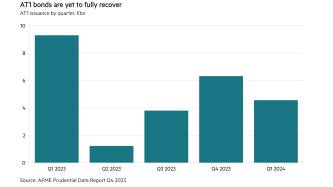The German economy weathered the storm from the Covid-19 pandemic well, thanks to strong government support, with a moderate downturn of 5% in 2020 followed by growth of 2.7% in 2021. As a result of the resilient economy, the country’s banking sector has largely been stable with strong asset quality and capitalisation.
Hamburg Commercial Bank (HCB) has retained its crown as Germany’s best-performing bank of the country’s 10 largest lenders. Contributing to its top overall ranking is its strong showing in terms of profitability, return on risk, soundness and leverage, where it is ranked first in all four categories.
The overall score of 5.42 is below last year’s score of 6.30, but HCB, which is active in corporate and private banking, is still way ahead of its peers, with DekaBank once again sitting in second place with a score of 4.91. DekaBank, the central provider of asset management and capital market solutions of the German Savings Bank Finance Group, scores well in profitability, return on risk and leverage.
DZ Bank, the central institution for around 800 co-operative banks, has moved up from fourth place last year to third place, while BayernLB, one of the country’s six Landesbanken, sits in fourth place, rising from ninth last year after a strong showing in terms of growth and profitability, where it is ranked first. BayernLB’s pre-tax profit in 2021 stood at €816m — more than quadrupling since 2020 — while the bank’s largest subsidiary, DKB, continued its ambitious growth with its retail customer base increasing to more than five million.
Landesbank Baden-Württemberg is ranked fifth, up from eighth last year, while Commerzbank sits in sixth spot, up from 10th. Commerzbank had a good year, returning to profitability in the first year of its transformation strategy. Further progress on its restructuring could see the bank climb further up the table next year.
Meanwhile, Deutsche Bank, the country’s largest bank by Tier 1 capital, has dropped from third to eighth amid a particularly poor performance in operational efficiency and profitability, where it is ranked ninth and eighth, respectively. Rentenbank and NordLB round off the top 10 ranking, with the latter dropping from fifth spot last year.
Looking ahead to the next 12 months, German banks should benefit from rising interest rates, with low rates having dragged on the profitability of the country’s lenders. However, German banks still face big challenges, such as its competitiveness with other lenders in the eurozone due to a lack of progress in diversification. Mergers could be the way forward, including possibly one that has been on the radar for some time between UniCredit and Commerzbank, with reports having emerged that two lenders were in talks for a tie-up earlier this year before the war in Ukraine derailed any potential deal.









